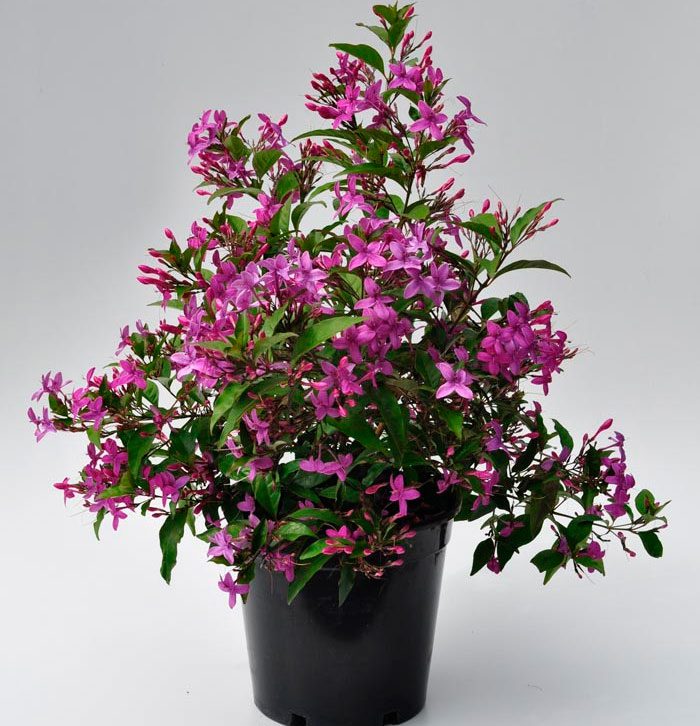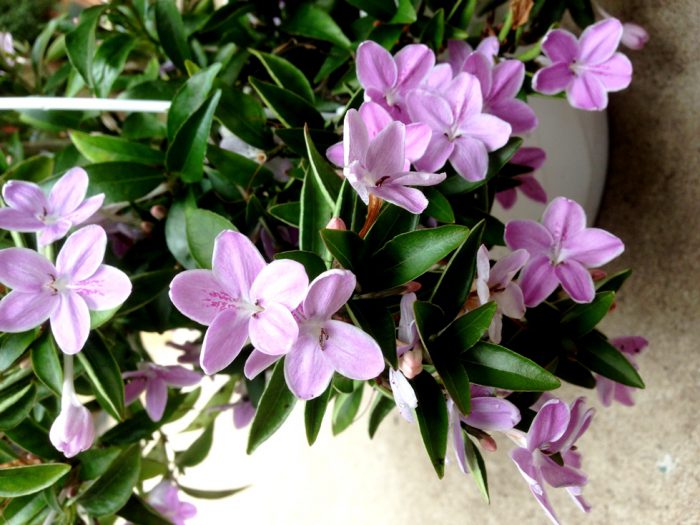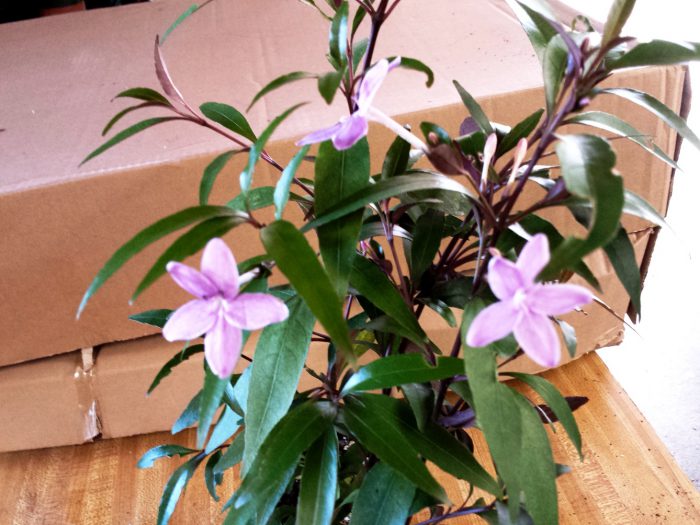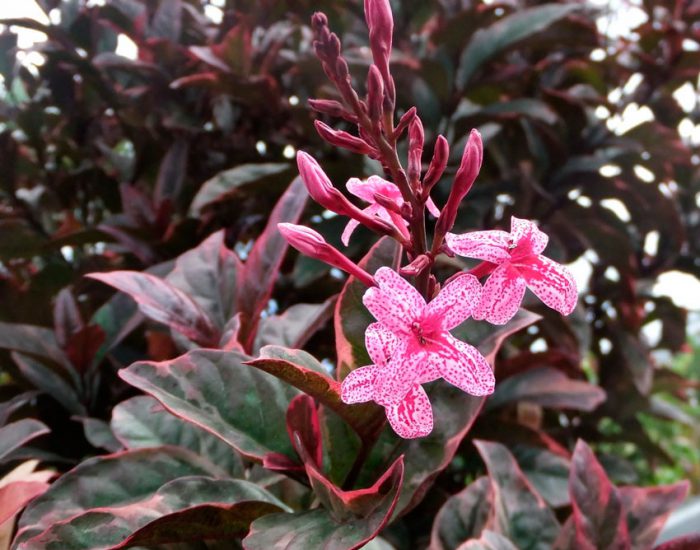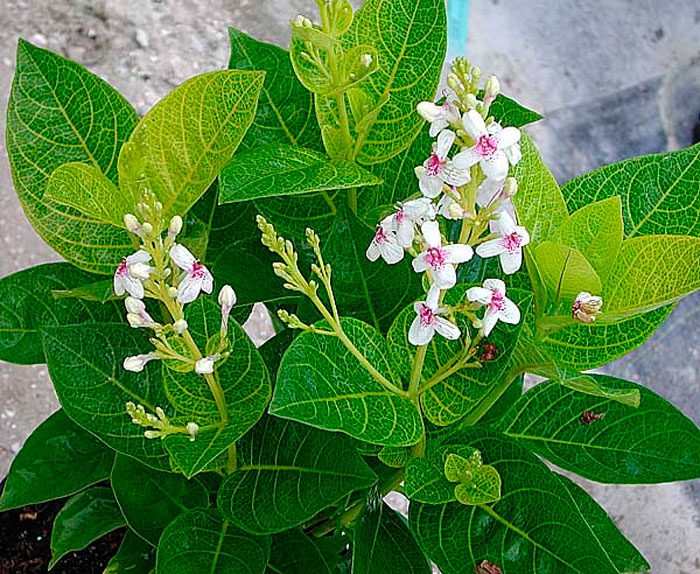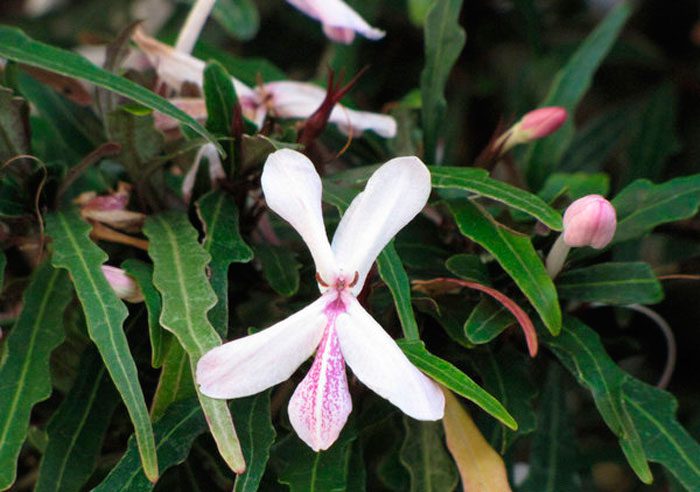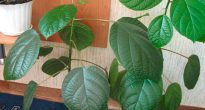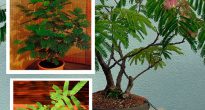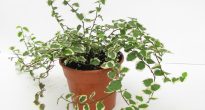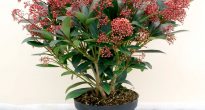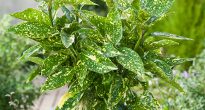A plant like pseudo-erantemum (Pseuderanthemum) is directly related to the Acanthaceae family. It is represented by herbaceous plants or shrubs. In nature, it can be found in tropical regions of the entire globe.
Such shrubs are branched and erect, and they also have spectacular leaves that can have a very different shape, for example: narrow-lanceolate, elliptical or obovate. In length, the leaves can reach from 10 to 15 centimeters. Shiny leaves have a textured (in places swollen or wrinkled) waxy surface. They are very delicate and rather fragile to the touch. The color of the leaf blades can vary from very dark almost black to green. On their surface, there are also spots of various sizes and colors (violet, purple, etc.). Most often, apical inflorescences grow, but axillary ones are also found. Flowers can be colored pink, white or purple.
Such plants are recommended to be grown in florariums.
Caring for pseudo-erantemum at home
Illumination
Bright lighting is necessary, but at the same time it must be diffused. You will need shading from direct sunlight. In winter, such a plant must be provided with good lighting. In this regard, experts advise using supplemental lighting with special fluorescent lamps. It is recommended to place such shrubs on east and west facing windows. When placed on a south window, shading from direct sunlight is required. If the lighting is poor, then the leaf plates will lose their variegated color. If the lighting is too intense, then the leaves of the pseudo-erantemum will acquire a rich red tint, but it will stop growing and developing itself.
Temperature regime
In summer, the plant thrives best at temperatures between 22 and 25 degrees. In autumn and winter, the temperature should not drop below 20 degrees. This plant reacts negatively to sudden changes in temperature, and it should also be protected from drafts.
Humidity
For normal growth and development, high humidity is required. In this regard, the plant should be moistened with a sprayer regularly and throughout the year.During warm wintering, you need to spray the foliage more often, since heating devices dry the air. To increase the humidity, you can also pour expanded clay, pebbles or sphagnum into a wide pan and pour some water. However, make sure that the bottom of the container does not come into contact with the liquid. For hygienic purposes, the leaves can be wiped with a damp sponge.
How to water
Watering should be abundant throughout the year. It is produced as soon as the topsoil dries up. As a rule, the substrate in the pot dries out relatively quickly, and that's because the pseudo-erantemum evaporates a large amount of moisture through the foliage. Make sure that there is no overdrying of the soil, otherwise the plant may shed all the leaves. When water stagnates in the soil, rot can form on the root system.
Top dressing
Top dressing is carried out in spring and summer 1 time in 4 weeks. For this, it is recommended to use fertilizers for indoor plants, which have a high potassium content. This will help make the color of the leaves more saturated. In autumn and winter, fertilizers do not need to be applied to the soil.
Transplant features
This is a fast-growing plant, in this regard, the transplant should be carried out once a year in the spring. In the process of transplanting, it is necessary to prune the roots, which also differ in rather rapid growth. Suitable soil should be light, slightly acidic or neutral. Do not forget to make a good drainage layer at the bottom of the container. The new container must be 2 sizes larger than the old one. If the pot is too small, then this can cause all the leaves to die off.
Pruning
In the process of growth, the foliage located below falls off, which is why the lower branches are bare. To fix this somehow, you need to carry out systematic pruning and pinching of the branches. This will allow you to get rid of bare branches, as well as increase the branching of the plant, which will have a beneficial effect on its appearance.
It should be noted that side shoots can grow exclusively upward. To improve the appearance of the bush, experienced flower growers recommend bending the branches to the surface of the soil using a flexible cord, while one end of it must be tied around the container.
Reproduction methods
It can be propagated by both semi-lignified and herbaceous cuttings.
For rooting to be successful, you need a mini-greenhouse. The soil temperature must be constantly maintained at about 25 degrees. Until that moment, until the cutting has roots, and it begins to grow, it is strictly forbidden to air the greenhouse. Stimulant hormones are often used for rooting.
For rooting such cuttings, you can take a glass of water. But it must be placed in a very warm place (25 to 28 degrees).
Pests and diseases
If you water it too much, rot can form on the roots.
At low air humidity, it very often settles on the plant spider mite... And even if the rules of care are violated, they can settle scabbards, mealybugs and whitefly.
Possible difficulties
- Flying around the leaves - overdrying of an earthen coma.
- The tips of the leaves dry out - low air humidity.
- The tips of the leaf plates dry out, and spots of brown color appear on the surface - intense lighting.
- The leaves turn yellow and die off - dry air, stagnant water in the ground.
Main types
Pseudorantemum dark purple (Pseuderanthemum atropurpureum)
In height, this shrub can reach 120 centimeters. Quite large short-peaked all-edge leaf plates are oval in shape and reach from 7 to 15 centimeters in length, and from 4 to 10 centimeters in width. They are colored reddish-pink and have yellow or green spots on their surface. The white flowers have spots of purple color.
There are varieties such as tricolor and variegatum. They have gained popularity among flower growers due to their variegated leaves (of various colors).
Pseudaranthemum reticulum (Pseuderanthemum reticulatum)
The height of such a shrub can vary from 50 to 100 centimeters. The length of the short-petiolized leaflets is 12-15 centimeters, and they have an oblong pointed shape. Their green, wavy surface has a dense network of golden yellow stripes. The diameter of the white flowers is approximately 3.5 centimeters. They have short pedicels, and the throat of the corolla is colored red.
Pseudarantemum sinuatum (Pseuderanthemum sinuatum)
Such a herbaceous plant reaches a height of half a meter. The length of the leaf plates is 12–15 centimeters and the width is 2 centimeters. They are narrow-lanceolate and notched at the edges. The front side of the leaf plates is colored greenish-olive, and the back side is light red. There are reddish-purple spots on the surface of the white flowers.

